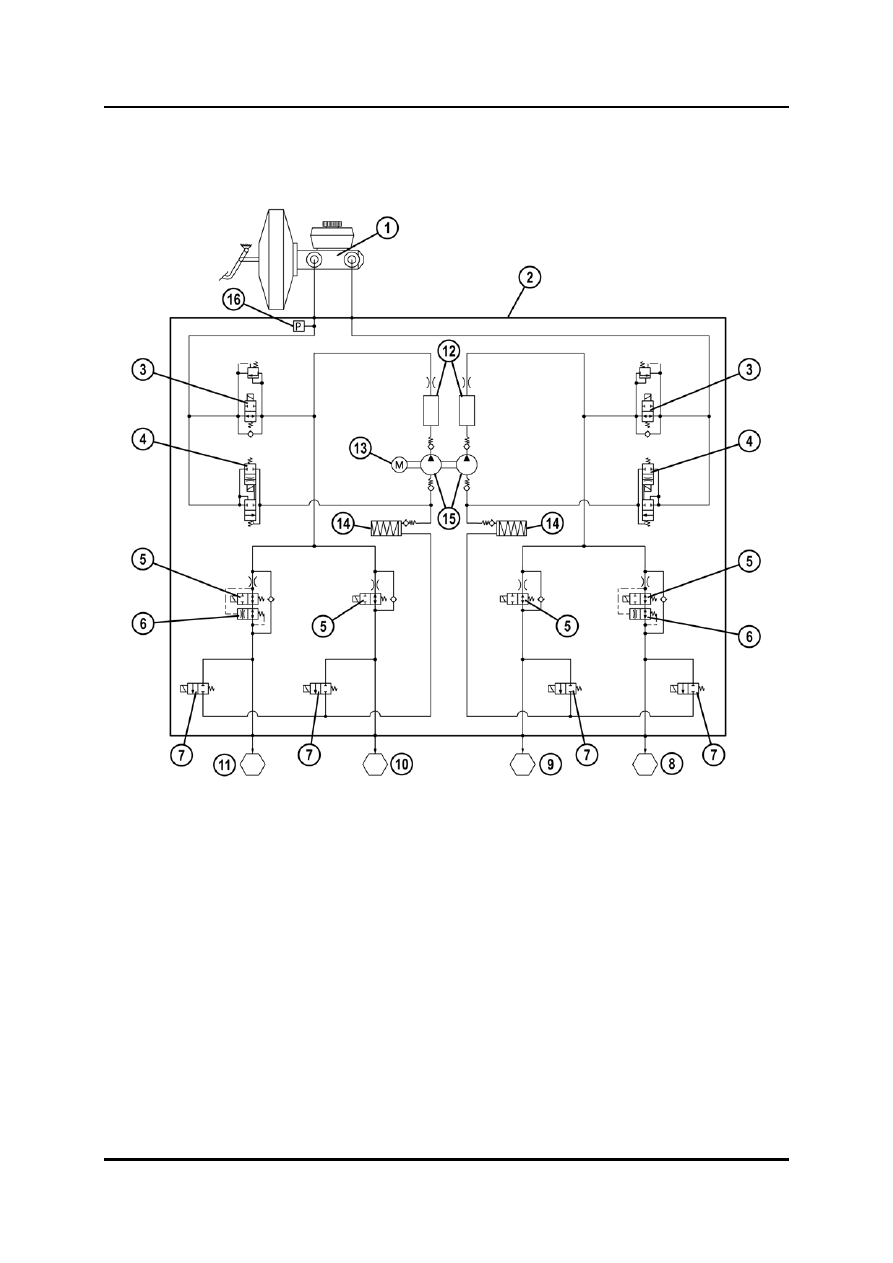Mazda Training manual - part 98

Dynamic Driving Safety Systems
DSC
Hydraulic Diagram
L2003_02029
1
Master cylinder
9
Brake calliper RR
2
DSC HU/CM
10
Brake calliper LR
3
Traction control solenoid valve
11
Brake calliper RF
4
Stability control solenoid valve 12
Damper
chamber
5
Inlet solenoid valve
13
Pump motor
6
Flow control valve
14
Reservoir
7
Outlet solenoid valve
15
Pump
8
Brake calliper LF
16
Brake fluid pressure sensor
Curriculum Training
02-51